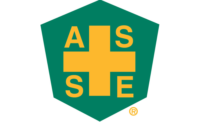The American Society of Safety Engineers (ASSE) on Tuesday honored Samantha J. Horseman from Saudi Arabia with its 2017 Award for Innovation in Occupational Safety Management during a ceremony at the Safety 2017 Professional Development Conference & Exposition at the Colorado Convention Center. The award honors those who bring creativity to managing safety in the workplace. Her winning innovation is a driver safety management system called Intellisense, which incorporates a dynamic mix of sound science and proven engineering principles to reduce traffic accidents.
“Her innovation is a game-changer in enhancing driver safety,” said ASSE President Tom Cecich, CSP, CIH. “It’s inspiring how occupational safety and health professionals like Samantha are constantly developing ideas that target workplace hazards. These talented innovators take the time to recognize creative solutions, and that is essential to improving worker safety and health while positively influencing organizational performance.”
Horseman, DBL, MBA, CCP(erg), CWP, is the team leader for human energy management at Saudi Aramco in Dhahran, Saudi Arabia. Her Intellisense system alerts a driver in real-time to high-risk behaviors and biometric levels so that adaptive learning occurs. The innovation is a powerful application of human computer interface technology, real-time data mining, and effective behavior change using biofeedback loops. In a study of high-risk drivers, it improved driving performance by 85 percent.
Horseman was presented with a plaque as well as $3,000 for her achievement. Four honorable mentions for the innovation award each received $500:
- Patricia M. Allen, STS, is director of ESHQA & CA at Savannah River Remediation in North Augusta, South Carolina. Her mobile slip simulator teaches people how to navigate slippery surfaces. The innovation is a first-of-its-kind mobile learning laboratory equipped with a slippery walkway, unique shoe covers, trolley system, large mirror and flat-screen monitor for instant feedback to trainees. The portable unit exposes workers to slip-and-fall prevention techniques in a cost-effective manner.
- David Catallo, CRSP, is the plant safety leader at Honda of Canada Manufacturing in Barrie, Ontario, Canada; and Matthew Clarke, CRSP, is the plant safety coordinator at that same facility. Their peer-to-peer participatory ergonomics program empowers production associates to ignite change and reduce workplace risk. They achieved a 36 percent reduction in musculoskeletal disorders through training, coaching and ongoing mentorship. Production associates were turned into ergonomic champions.
- Joshua Hancey, MBA, is director of safety and risk management at Vivint Solar in Lehi, Utah. His module lift pulls solar modules up a ladder to workers on the roof. It prevents employees from manually lifting the 45-pound modules up a ladder. The innovation allows the ladder to stay in its normal position, saving time and money. The device has a self-locking brake to prevent heavy modules from crashing down if a worker releases the rope.
- Corene Jackson is regional director of operations at Airgas Dry Ice and Air Liquide Company in Henrico, Virginia. Loading blocks of dry ice into shipping containers presents many safety, productivity and ergonomic challenges. Jackson’s Dry Ice Block Loading Project combats these challenges using a combination of off-the-shelf components and custom-designed apparatuses. By shifting the physical burden from the operator to the equipment, it eliminates hazards as well as contusion and laceration risks.
The Award for Innovation in Occupational Safety Management, sponsored by Cintas Corporation, is presented annually at ASSE’s safety conference. It honors a member or non-member of the society who has developed a dynamic workplace innovation that achieves safety program and efficiency improvements; enhances safety decision-making; eliminates hazards and exposures; and reduces incidents, injuries and fatalities on the job.




